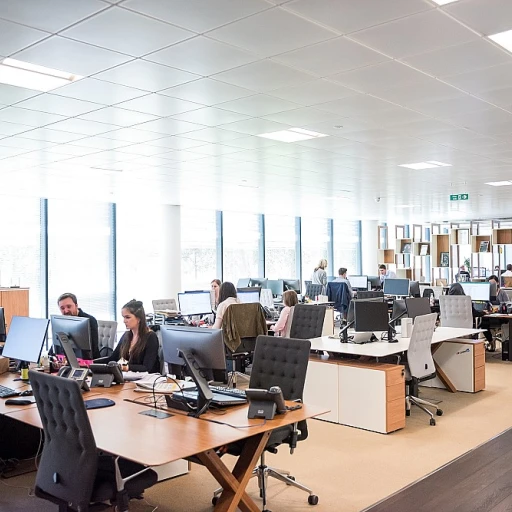Understanding Employee Engagement
Recognizing the Importance of Employee Engagement
Employee engagement has become a cornerstone of organizational success. It is more than mere job satisfaction; it involves the emotional and psychological connection that employees feel towards their work and company. Engaged employees are not only more productive but also contribute to a positive work culture and align with the company's goals. The benefits of having an engaged workforce extend to various facets of a business, including improved performance and enhanced team dynamics. To maintain high engagement levels, it's crucial for management and human resource teams to understand what drives employee engagement. They should continuously evaluate their work environment through surveys and performance management systems to identify areas of improvement. Engagement surveys, for instance, offer invaluable insights into how employees perceive their roles and the company culture. Understanding engagement is a shared responsibility. Managers and team leaders play a pivotal role in enhancing the work environment, ensuring team members feel valued and heard. Creating an inclusive culture that fosters mental health and recognizes employees’ efforts can significantly bolster engagement. Moreover, developing robust engagement strategies can help businesses navigate the complexities of today’s workforce challenges. Implementing employee engagement best practices is imperative for sustaining employee enthusiasm and fostering a conducive work atmosphere. Businesses must also consider external factors such as recruitment marketing in their engagement plans to attract and retain skilled talent. For more insightful strategies on recruitment marketing, check out this article on attracting talent through recruitment marketing.The Role of Human Resource Management in Engagement
Fostering a Proactive Work Environment
Employee engagement is undeniably influenced by the atmosphere at work. Human Resource Management plays an essential part in cultivating an environment that prioritizes positive engagement strategies. It's more than just implementing surveys or discussing best practices—it's about creating a company culture where employees feel valued and motivated.The Influence of Leadership and Management
Strong leadership is fundamental in sustaining employee engagement. Managers in any organization should act as role models to inspire their team members. They have the responsibility to guide their workforce through performance management tactics that not only aim for company success but also focus on employees' mental health and overall well-being.Building a Supportive Company Culture
One of the most effective ways to foster engagement is through a supportive company culture. When organizations prioritize open communication and feedback, employees feel heard and respected. For instance, implementing regular engagement surveys helps gauge engagement levels and uncover possible areas for improvement. Understanding the nuances of employee morale can transform strategies into meaningful actions.Ensuring Continuous Performance Improvement
As a part of resource management, focusing on continuous improvement can greatly enhance workplace engagement. It's not just about setting goals but ensuring every team member has the resources and opportunities to meet these goals. This proactive approach not only improves employee performance but establishes a culture where engaged employees thrive.Upskilling as a Tool for Engagement
Leveraging Upskilling to Drive Engagement and Performance
In today’s rapidly changing work environment, it is crucial for organizations to focus on engaging their workforce effectively. Upskilling presents a unique opportunity for companies to enhance employee engagement while boosting overall performance. When employees are given the chance to develop new skills, they often feel more valued and connected to their workplace. This sense of value and personal growth is a key component in building a motivated and engaged team.
Upskilling allows employees to expand their capabilities, leading to improved job performance and satisfaction. When employees feel equipped to meet the demands of their roles, it significantly contributes to a positive company culture. This is where strategic human resource management plays a pivotal role, integrating upskilling initiatives with other engagement strategies to foster a thriving business environment.
A common observation in high-performing organizations is that engaged employees are often those who see a clear path for professional growth within their company. This makes upskilling not just a tool for individual development, but a critical element in sustaining employee engagement and retention. By proactively addressing skills gaps, managers can create a culture where employees are continually learning and evolving alongside the organization.
Email surveys and feedback mechanisms can offer valuable insights into areas where employees wish to develop their skills. This data can guide HR resource management in designing effective upskilling programs that resonate with employees’ aspirations and the company’s objectives. Moreover, when employees see that their contributions and feedback lead to tangible development opportunities, it reinforces trust and loyalty towards the organization.
Identifying Skills Gaps and Opportunities
Recognizing Skill Gaps to Boost Employee Engagement
In any vibrant organization, ensuring that employees are not only present but effectively engaged in their work is paramount. Engaged employees often feel more connected and committed to their roles, which results in improved overall performance and contributes to the organization's success. To sustain employee engagement and optimize team performance, identifying skills gaps is a crucial step. Every company, regardless of its industry, should regularly conduct engagement surveys and comprehensive assessments to ascertain where their workforce stands in terms of skills and competencies. These surveys can provide insights into the current capabilities of the team and highlight areas lacking sufficient skills. Furthermore, managers play a vital role in understanding and pinpointing individual team members' strengths and weaknesses. By fostering open communication and encouraging an honest dialogue around career aspirations and training needs, companies can create a supportive and transparent work environment, where employees feel valued and motivated. Recognizing these skill gaps not only aids in performance management but also enables a company to develop strategies tailored to the different needs within its workforce. This emphasis on personal growth and professional development can significantly enhance employee engagement levels, promoting a healthier company culture. Once gaps are identified, it's crucial for human resource management to collaborate with various departments to address these opportunities. Whether it’s technical training, leadership development, or enhancing soft skills, providing targeted upskilling initiatives is essential. Such strategic development measures will positively impact your organization, as employees become more skilled and thus more engaged. In sum, taking steps to identify and subsequently bridge skills gaps is fundamental to creating an engaged and dynamic workplace. Managers and HR teams must work in tandem to drive these initiatives forward, ensuring sustained engagement and business success.Implementing Effective Upskilling Programs
Creating a Successful Upskilling Framework
Establishing a coherent framework for upskilling is essential in fostering an environment where employees feel valued and engaged. The journey begins with understanding the specific needs of your workforce and aligning them with the business goals. Integrating this alignment into the company culture can significantly enhance employee engagement. To craft an effective upskilling program, consider the following key components:- Employee-Centric Approach: Engaged employees are more likely to embrace new learning opportunities. Engaging employees in developing their learning paths ensures that upskilling initiatives resonate with their personal and professional aspirations.
- Utilize Engagement Surveys: Surveys are instrumental in identifying the gaps between current competencies and the required skills. Managers can leverage these insights to design targeted upskilling strategies that enhance workforce performance and business success.
- Promote a Supportive Work Environment: Cultivating a supportive workplace encourages team members to actively participate in upskilling activities. This can involve creating a culture where continuous learning is celebrated and where employees feel comfortable exploring new capabilities.
- Incorporate Best Practices: Stay updated with the latest trends and techniques in performance management. Implementing proven best practices in training and development ensures the success of the upskilling program while maintaining high engagement levels among employees.
- Promote Mental Health and Well-being: Acknowledge the role of mental health in sustaining employee engagement. Programs that address well-being foster a balanced and motivated workforce, optimizing the effectiveness of upskilling efforts.
Measuring the Impact of Upskilling on Engagement
Assessing the Impact of Skill Enhancement on Workforce Involvement
To measure the impact of upskilling on employee engagement, it's crucial to utilize a combination of qualitative and quantitative approaches. These methods will provide a comprehensive understanding of how well the implemented initiatives resonate within the organization and contribute to employee engagement.- Engagement surveys: Regular surveys are one of the most effective tools to capture employees' perceptions and levels of workplace engagement. These surveys can gauge how upskilling opportunities have influenced employee satisfaction, motivation, and commitment. Tailor these surveys to address specific areas connected to the organization's training programs and resource management strategies.
- Performance metrics: Analyzing performance data before and after upskilling initiatives can reveal changes in workforce productivity and efficiency. Look for indicators related to team output, employees' problem-solving abilities, and innovation within the company's culture.
- Feedback and communication: Facilitate open dialogue between managers and employees to understand personal experiences and impacts of upskilling. These conversations may uncover insights into cultural shifts, personal growth, and work satisfaction linked directly to new skills acquired.
- Engagement strategies revisited: Reassess the company's engagement strategies to identify whether an upskilling approach has helped in creating a more engaged work environment. This reassessment also involves integrating best practices observed during upskilling to sustain an engaged workforce over time.












